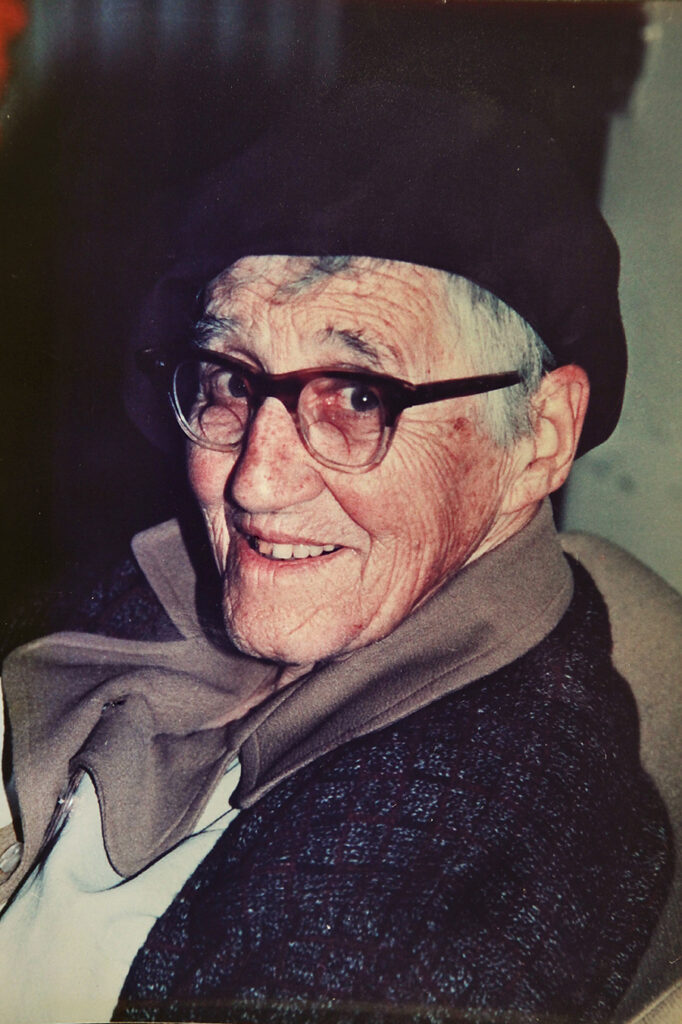
Nechama Leibowitz is considered by many to be one of the world’s greatest Bible scholars. She was described by her admirers as the first talmida hachama, or female Torah scholar, of modern times.
Leibowitz was born in Riga, Latvia, in 1905 into an Orthodox household, two years after her elder brother, the philosopher, Yeshayahu Leibowitz. However, her mother died when she was very young. She and her brother were taught Torah, Talmud, and also secular literature by their father, and often Nechama competed against her brother in her father’s Bible quizzes around the family table.
In 1919, her father moved the family to Berlin so that his children could have a better education. The fact that Leibowtiz had been brought up in complete intellectual equality with her brother inspired her with the self-confidence to go to college and graduate school. In 1930, she obtained her doctorate in biblical studies. That same year, she married an older uncle, Yedidya Lipman Leibowitz, and they immigrated to Mandate Palestine. He became blind shortly after, so she needed to work as a teacher to support the family.
Leibowitz’s keen mind, breadth of knowledge, insight, and humor, made her a popular teacher who trained other teachers at the Mizrachi Women Teachers Seminary in Israel. Leibowitz believed that women should study Torah, so she began teaching a weekly Torah session for women. Eventually, she traveled around the country for over 60 years teaching Bible and commentaries to other teachers, new immigrants, soldiers, kibbutzniks, and thousands of ordinary people. She even had a regular slot for Bible commentary on the Voice of Israel radio station.
In 1951, she became one of the first teachers to use distance learning. Many women wanted to learn from her who lived all over the Israel. Not having email or the internet, she mimeographed weekly worksheets and mailed them out to her students. These worksheets, which called gilyonot (or pages) would be sent back to her; she would personally review each of them and then return them by mail with corrections and comments. Word spread, and her correspondents grew into the thousands. Soon, she began publishing her study sheets, or lyyunimi, and over time they were collected into five books, one of each book of the Torah, and translated into other languages.
Leibowitz taught using a Socratic method, that is, posing problems for students to solve. She felt that accumulation of knowledge came through active engagement and understanding, not through memorization. Not only did she discuss and explain biblical passages, but she also examined and compared the opinions of the commentators, particularly Rashi and Maimonides. What did each commentator say and why did they disagree? She originated the famous catch phrase often still asked in Jewish learning: What’s bothering Rashi?
Instead of using traditional methods of biblical criticism, Leibowitz pioneered the technique of literary analysis, a method later popularized by future postmodern twentieth century biblical scholars. She paid attention to literary devices such as keywords, flashbacks, and parallelisms, often highlighting subtle differences between repeated stories in the Bible to give the reader insight into the characters’ thinking. From this more accessible approach, she would deduce the narrative’s most important theological and ethical lessions.
Nechama Leibowitz lived a life of humility and simplicity. She insisted that everyone call her Nechama and preferred the title of “teacher” over the more prestigious “professor.” She refused to let newspapers interview her, declaring, “I am not a museum!”
Leibowitz was awarded the Israel Prize for education, the nation’s highest honor, in 1957. She became a professor at Tel Aviv University in 1968, and received the Bialik Prize in Literature and Jewish Studies in 1982. In 1983, she received an honorary doctorate from Bar-Ilan University. She refused to wear a cap and gown at the ceremony, instead, wearing her usual outfit, a simple brown suit and a brown beret, tilted to the side.
Leibowitz lived to age 93, dying in 1997. Although she had no children, all of her students were like her children, and hundreds of them stood to say Kaddish at her funeral. In keeping with her request, her gravestone has one word on it: Morah or teacher.
